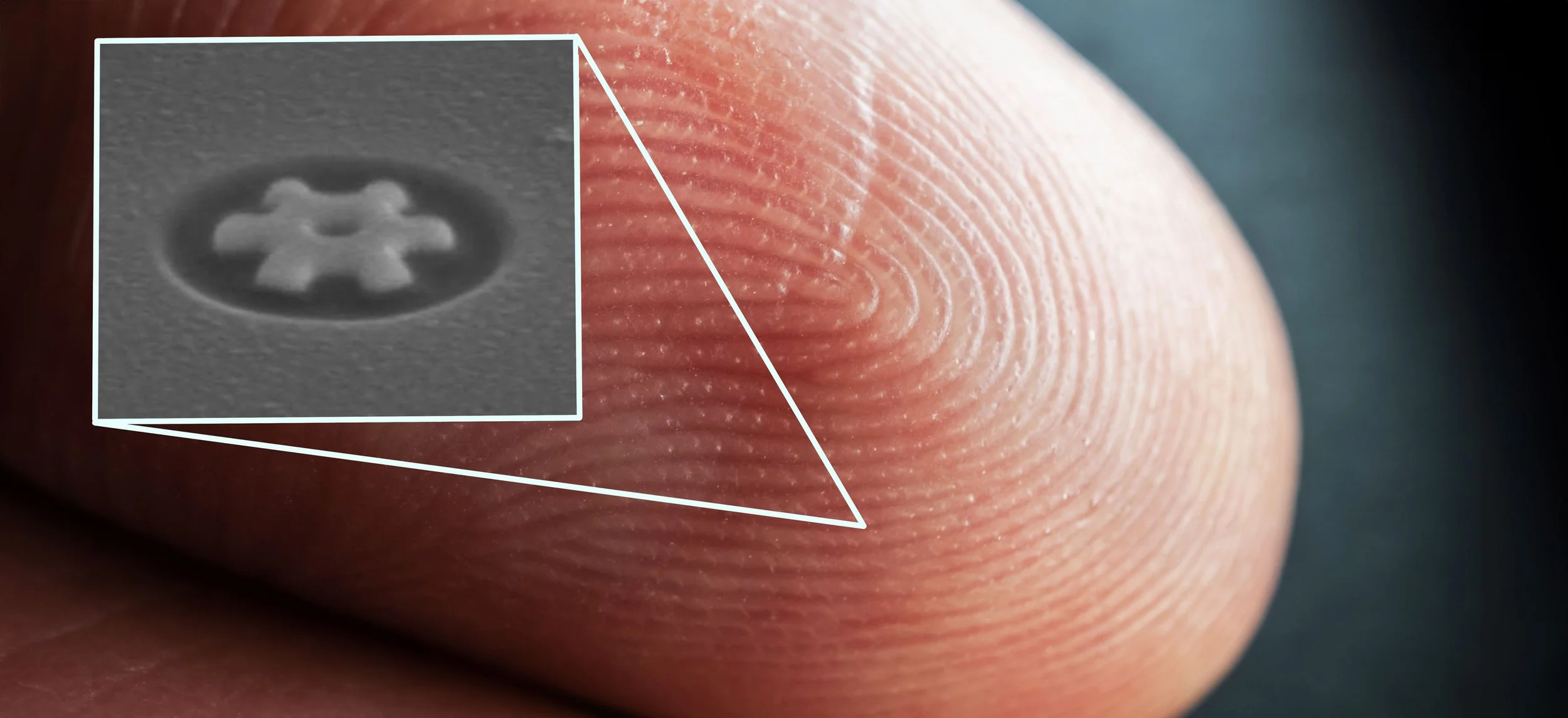Smallest Gear in the World
How small is the World’s smallest gear and how are these micro-gears created, but more importantly what are they used for?
How ARE The Smallest Gears Made?
Let’s first understand how these microscopic-sized gears and robots are created. Researchers at Cornell and the University of Pennsylvania have created four-legged microscopic robots. They’re capable of moving when stimulated by light directed with a laser. Using a similar process to creating microchips, these researchers have created miniaturized devices that can be equipped with legs. The legs are built with a platinum sheet layered with an inactive material such as graphite. A pattern in the inactive material allows the legs to move when stimulated.
3D render of Cornell’s and the University of Pennsylvania’s microscopic robot
The University of Pennsylvania’s bacteria controlled gear
Another way these tiny components are created is by shining light through small photo masks onto a plastic compound. The compound will harden into the desired shape and is ready to be given functionality. Unlike the computerized approach to functionality, two researchers, also at the University of Pennsylvania, have used swarms of bacteria to control their microstructures. Control comes from the chosen shape of the gears and by manipulating the bacteria with blue light.
These tiny robots and structures are both microscopic, but let's consider two gears at the nano-scale that have been easily measured by a counting of atoms.
The World of Nanometers
It has been analogized that there are more atoms in a single grain of sand than there are grains of sand in the world. This means a single grain of sand possesses more than 100 quintillion atoms. Atoms exist on such a small scale, of 0.5 nanometers, that they cannot be observed with light microscopes. The wavelength of visible light is around 540 nanometers, making anything smaller than approximately 200 nanometers appear blurry.
To overcome this limitation, scientists use techniques that involve shorter wavelengths. For example, electron microscopes use electrons, which have much shorter wavelengths, to generate detailed images of nanoscale objects, such as tiny gears.
These advanced techniques allow us to see and manipulate structures at the nanoscale. So exactly how large are these nanoscale gears, and how have they been created?
Institute of Materials Research and Engineering Singapore’s Molecular Gear
Molecular Gear Wheels
If we took a trip to Germany to visit the University of Erlangen-Nuremberg we’d have to zoom in a lot closer to see the research being conducted on molecular gear wheels. Using a molecule called an “interlocked triptycene” and a fragment of a “thioindigo” molecule, the researchers created a gear controlled by light. This gear measured 1.6 nanometers and was made up of only 71 atoms.
So does this answer the question of the world’s smallest gear?
Before that can be answered we have to look at the Institutes of Materials Research and
A GUINNESS WORLD RECORD
Engineering Singapore which similarly constructed a molecular gear. This gear was created with one “pyrimidine core” and five “phenyl rings” all connected to a central “planar phenyl” molecule (hexa-t-butyl-pyrimidopentaphenylbenzene (C64N2H76; HB-NBP)). This molecular gear would measure 1.2 nanometers and consist of roughly 53 atoms. It was controlled using an electrical connection. This would lead Guinness World Records to officially recognize Singapore’s IMRE for creating the first working molecular-sized gears with full controllability.
So aside from all the technical science, what are these tiny gears and structures used for, or should we ask what will they be used for?
A Future of Solutions
While these studies have yet to fully be applied to direct applications in our everyday lives, they pave the way for a promising future where advancements in nanotechnology catch up with our imagination. Imagine a world where medicine can be precisely delivered to specific parts of the body, where cancer can be fought at the molecular level, and where individual cells or molecules can be manipulated for various purposes. Picture a future where nanotechnology aids in tasks from pest control to cleaning up oil spills or even collecting data. This future isn’t too far away either, for example, nanoengineers at the University of California San Diego have already successfully cleared bacteria of deadly pneumonia in the lungs of mice resulting in a 100% Survival rate. As we continue to push the boundaries of what is possible at the nanoscale and micro machines, we move closer to unlocking the practical applications that will shape our future.
Medical screw processed with our MAX Systems
Although there isn’t a need for a machined finish on these microstructures yet, we at James Engineering do deburr gears and components down to 1/16th of an inch. And who knows, with our constant advancements, you just might one day see an atom-sized chamfer from us.
To learn more about our contribution to advanced technologies and machining, reach out or contact us at James-Engineering.com





